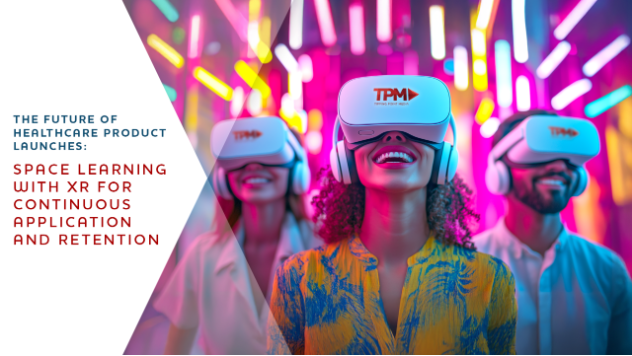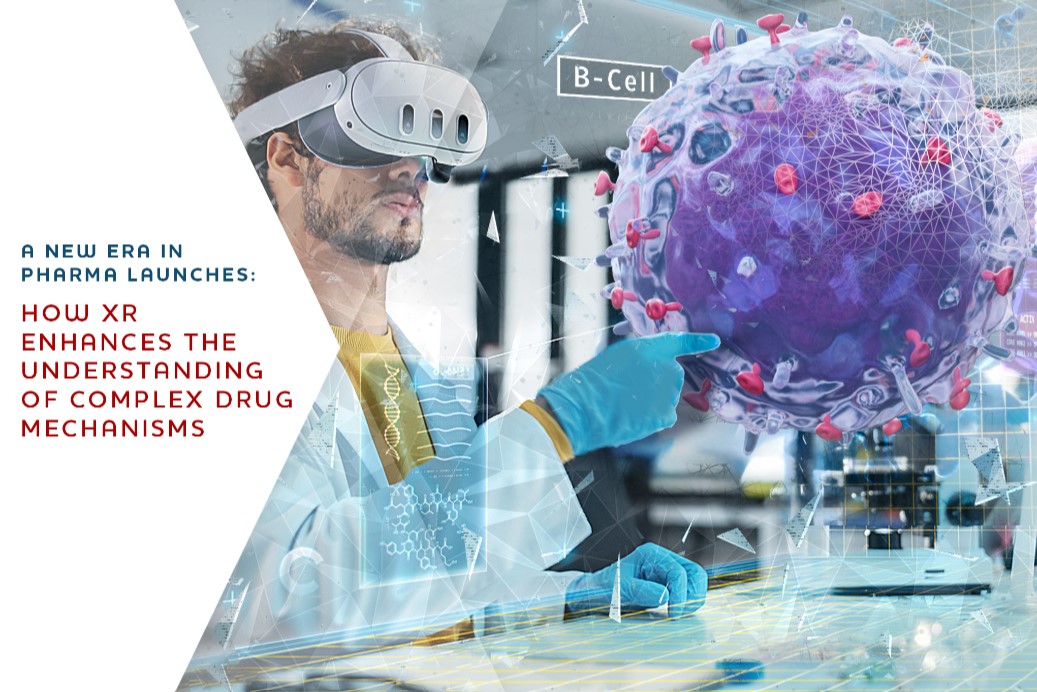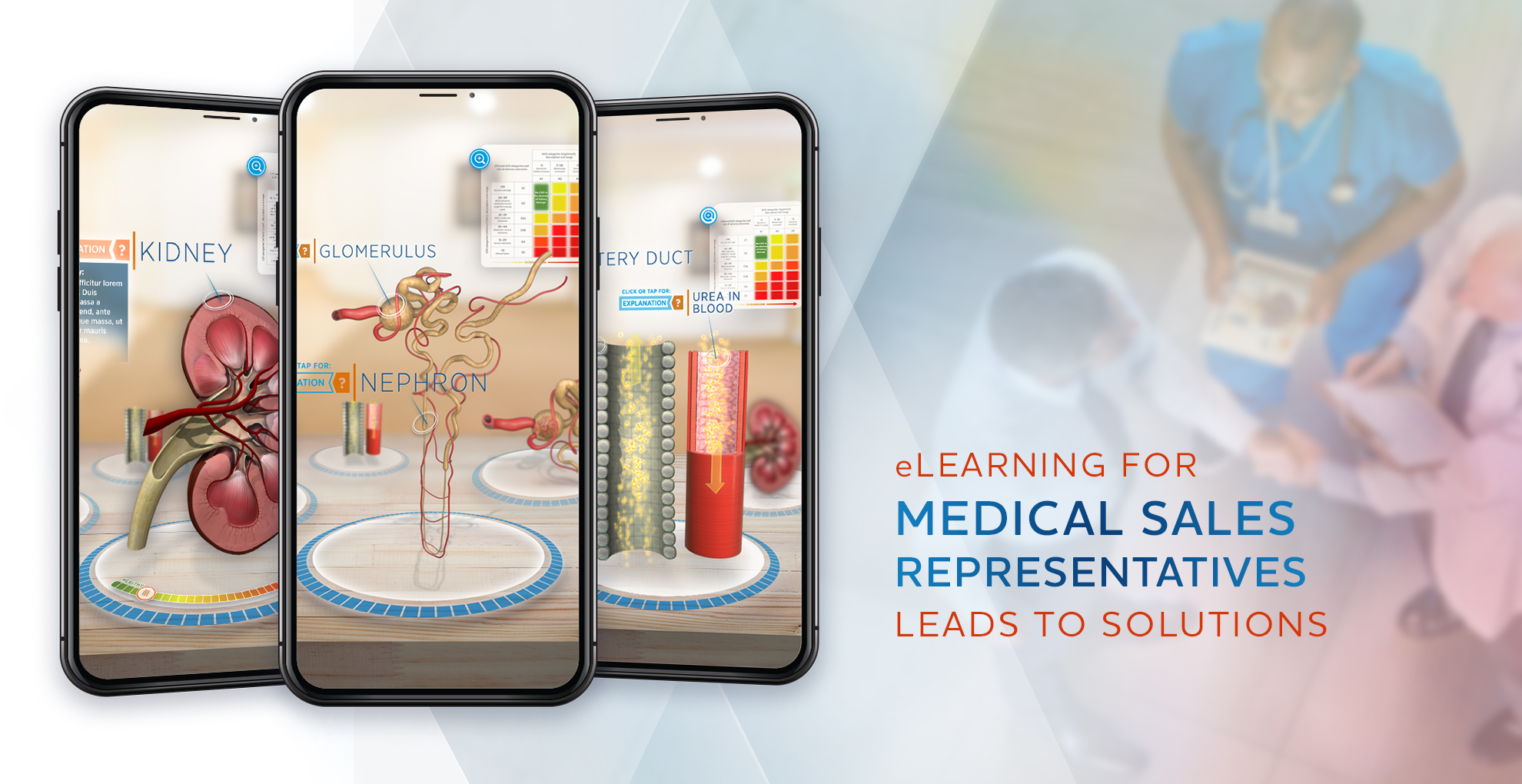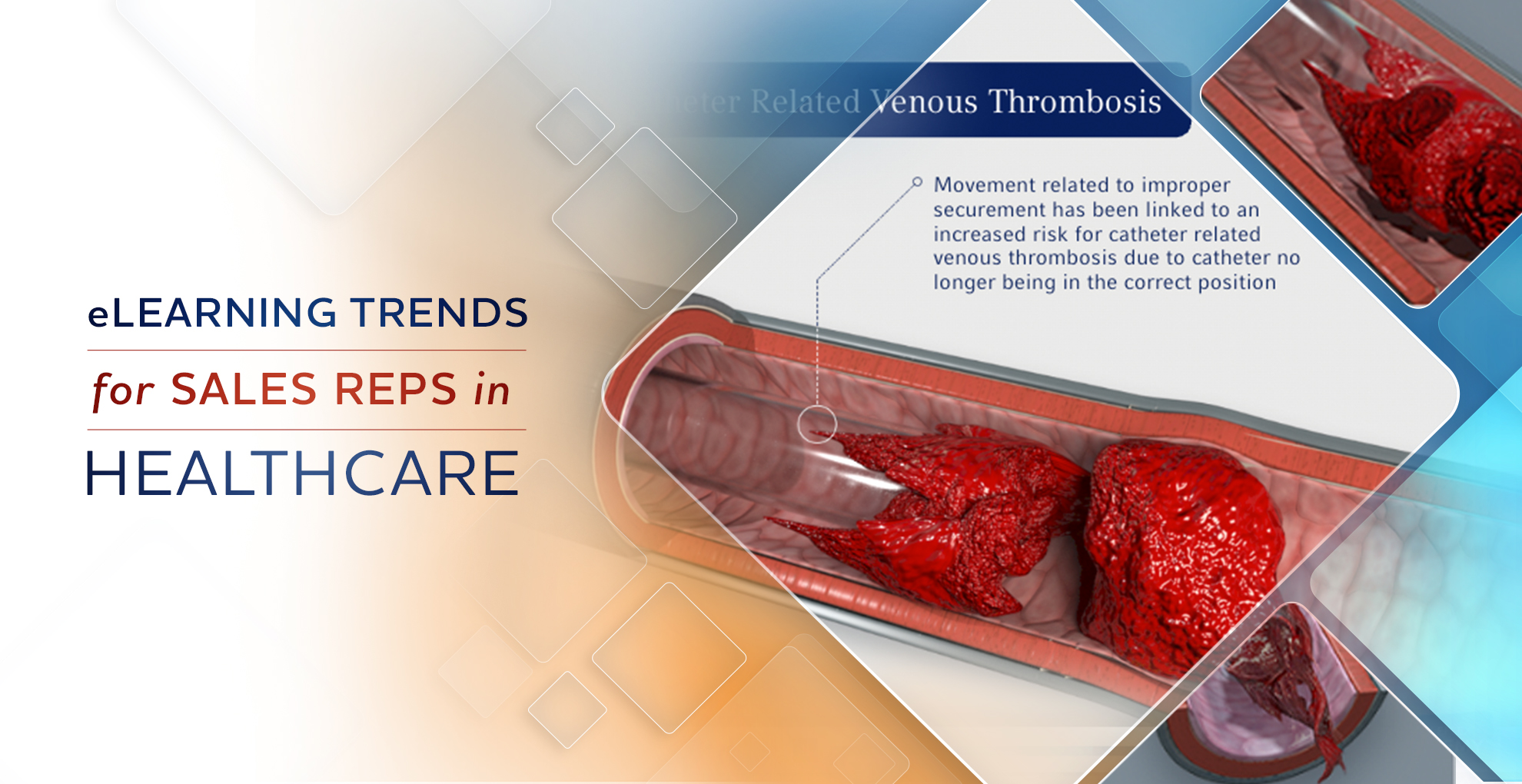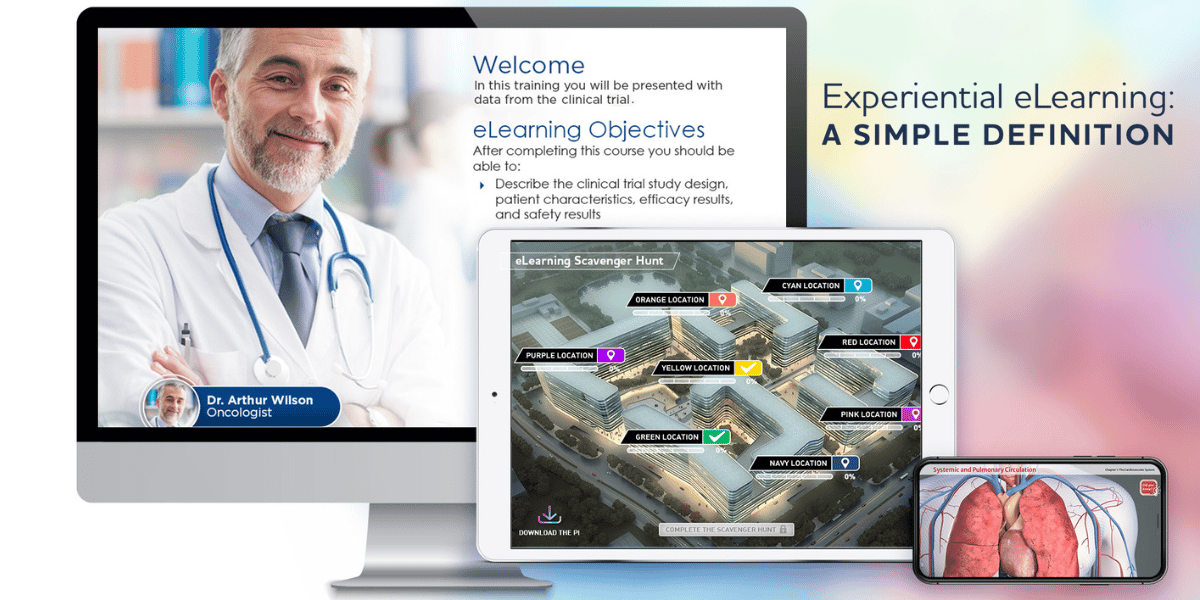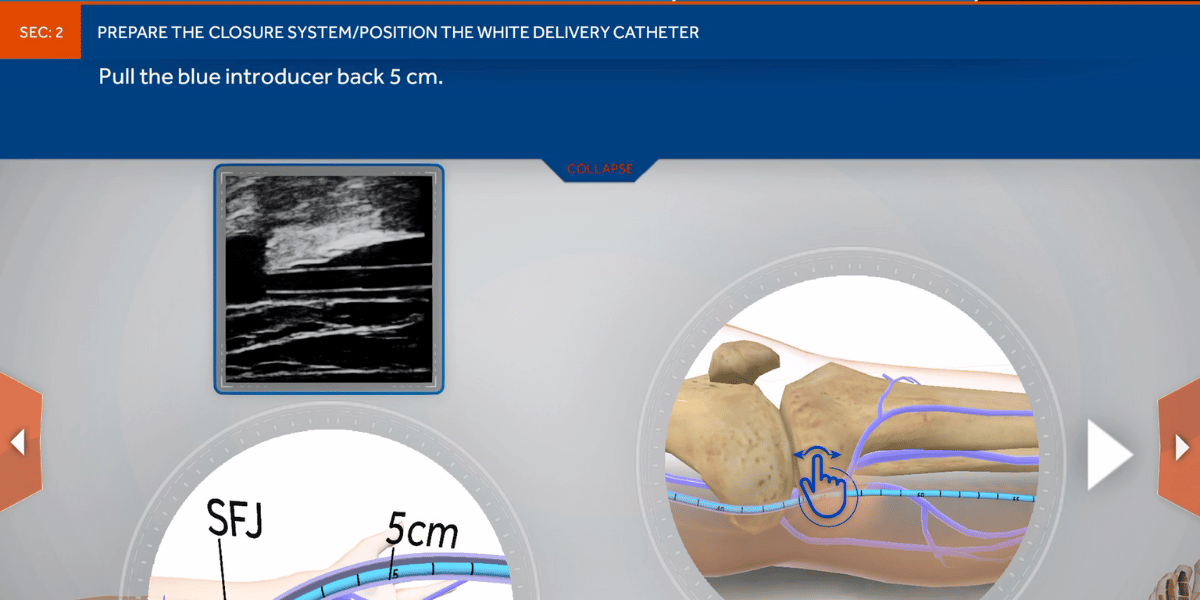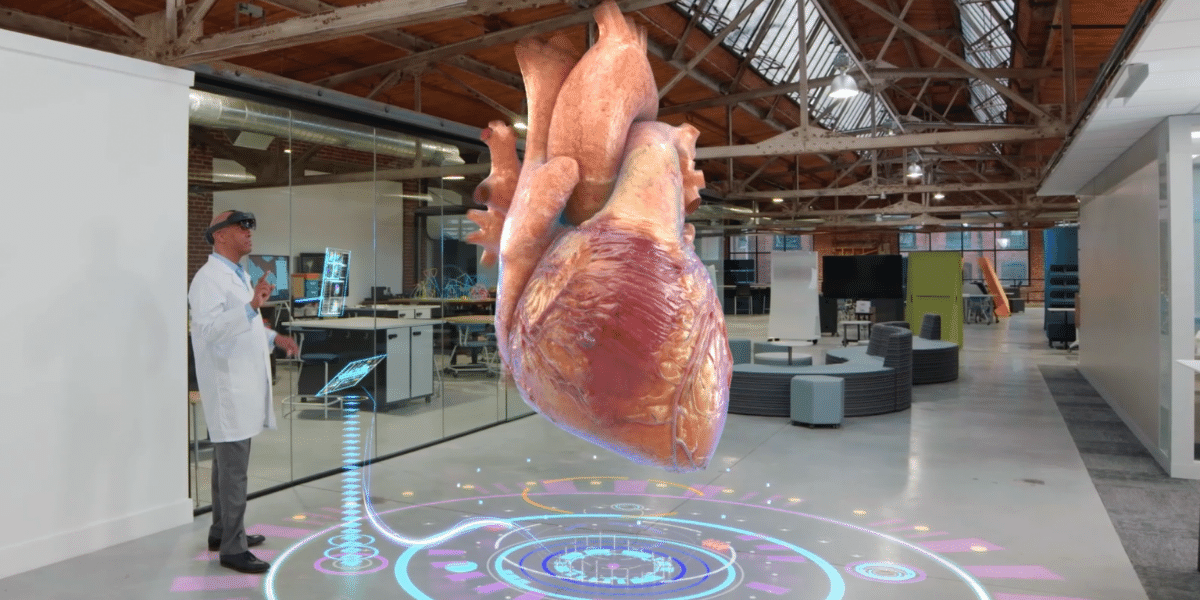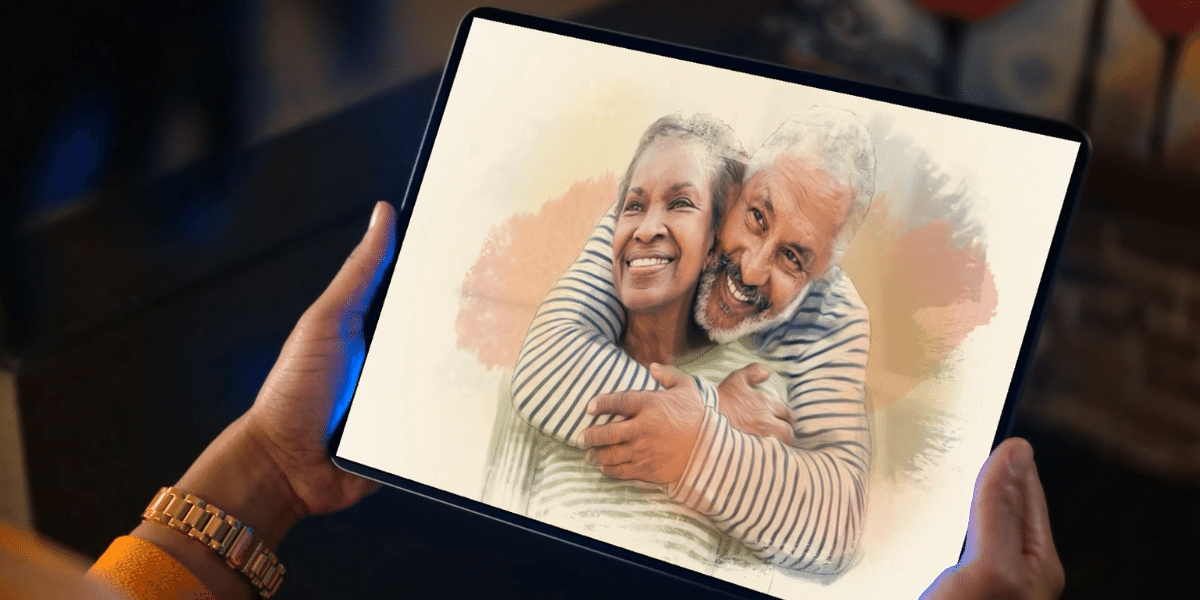Capital equipment sales in medtech involve extended decision cycles and engagement with diverse stakeholders, from clinicians and nurses to procurement, IT and executive leadership. For selling such high-value systems as imaging platforms, surgical technologies, diagnostic analyzers and interventional equipment, success depends on the ability to communicate clinical relevance, workflow implications and financial justification with precision. …
The pharmaceutical, biotech, and medtech sectors are redefining what impactful training means by moving beyond surface metrics like attendance or course completion. Today’s leaders are embracing data-driven approaches that link learning directly to measurable improvements in the field.1 Many sales teams are adopting learning models rooted in Experiential Learning to elevate training from passive participation …
Continue reading “Measuring What Matters: Connecting Training Investments to Field Performance”
National Sales Meetings (NSMs) have long provided an invaluable platform for aligning teams, celebrating achievements, and communicating company strategies. At their core, these meetings offer invaluable face-to-face time for representatives to practice new messages, refine product storytelling, and build confidence in a safe, feedback-rich environment. They also create opportunities to share best practices, learn from …
Continue reading “National Sales Meeting Transformation: Creating Moments That Inspire and Educate”
The Evolution of Healthcare Education The healthcare industry stands at a pivotal juncture in its approach to professional development and patient education. Traditional methods—static pamphlets, one-dimensional slideshows, and passive lectures—represent an outdated paradigm that fails to address the complex needs of modern medical practice and patient engagement. These conventional approaches, while providing basic information, have …
Continue reading “Experiential Learning for Patients and HCPs Beyond the Pamphlet [2025 Guide]”
Escape Rooms have evolved beyond entertainment, proving to be powerful tools for training and marketing by revolutionizing meetings, workshops, events, and even product launches, for life science companies of all sizes. By simulating real-world scenarios, Escape Rooms enhance learning and retention, foster camaraderie and teamwork, and provide branded and customized learning environments relevant to the …
Continue reading “Virtual Reality (VR) Escape Rooms Revolutionize Meetings & Product Launches”
Cancer drug treatment represents one of the most complex medical interventions, with approximately 90% of chemotherapy failures occurring during the invasion and metastasis of cancers related to drug resistance. Despite advances in cancer therapy, patients often struggle to comprehend the intricate biological processes happening within their bodies. This comprehension gap is particularly concerning when considering …
Continue reading “Understanding Cancer Treatment through Virtual Reality (VR) – [2025 Guide]”
The Challenge in Modern Medical Training The medical education landscape faces unprecedented challenges today. Healthcare institutions are witnessing a decline in direct patient contact opportunities for trainees, coupled with increasingly complex medical procedures and heightened patient safety concerns¹. This convergence of factors has created an urgent need for innovative educational approaches that transcend conventional training …
Continue reading “How Mixed Reality Simulations Cut Medical Training Errors by 60%”
Augmented reality packaging is revolutionizing healthcare, with the market projected to reach $152 billion by 2030. This rapid growth reflects a significant shift in how pharmaceutical companies engage with healthcare providers and patients. Notably, more than 50% of physicians have expressed interest in using AR technology to learn about new treatments and conditions. In fact, …
Continue reading “How Augmented Reality Packaging Is Transforming Pharma Sales [2025 Guide]”
Medical Virtual Reality (VR) training delivers remarkable improvements in surgical skills and procedural accuracy while reducing operating room time. Research analysis spanning 44 studies demonstrates clear advantages of eXtended Reality (XR) technologies for surgical mastery. Plus, XR includes Virtual Reality (VR), Mixed Reality (MR), and Augmented Reality (AR) tools. Virtual Reality in surgery equips medical …
Continue reading “Mixed Reality Surgical Training: Advancing Medical Device Launches”
Traditional healthcare product launches just need heavy investments in physical demonstrations, worldwide travel, and complex logistics. These requirements often lead to limited reach and high costs. Launch excellence pharma initiatives face these challenges, especially when you have new medications or medical devices entering global markets. XR technology has revolutionized healthcare demonstrations. Pharmaceutical companies now use …
Introduction: The Revolution of XR in Healthcare Product Launches Healthcare product launches typically take 5-7 years from idea to market. This lengthy timeline costs pharmaceutical companies billions in revenue and delays crucial medical solutions that patients need. Pharmaceutical companies face growing pressure to speed up their product development cycles. They must launch products faster while …
Continue reading “Accelerating Healthcare Product Launches: The Role of XR Technology”
eXtended Reality (XR) is transforming healthcare and medical device launches. It offers innovative solutions to longstanding challenges. This cutting-edge technology is revolutionizing how healthcare professionals interact with new medical equipment. It provides immersive experiences that enhance understanding and engagement. XR simulations and virtual reality applications are reshaping healthcare education. They’re also improving clinical skills training. …
In the ever-evolving landscape of healthcare, product launches have undergone a transformative journey. Gone are the days when traditional methods like in-person training sessions and printed materials were the sole means of disseminating information. The advent of cutting-edge technologies has paved the way for a paradigm shift in how healthcare professionals acquire knowledge and skills. …
Extended Reality (XR) is a term that encompasses a broad spectrum of technologies, including Augmented Reality (AR), Virtual Reality (VR), and Mixed Reality (MR). These innovative technologies are transforming how pharmaceutical companies approach product launches and marketing strategies. By seamlessly integrating XR into their marketing mix, pharmaceutical, medical device, and biotechnology companies can create immersive …
Revolutionizing Pharmaceutical Marketing with Extended Reality The pharmaceutical industry faces unique marketing challenges that can hinder effective communication and product promotion. Strict regulations, complex client relationships, and fierce competition create a demanding environment that requires innovative solutions. However, Extended Reality (XR) technology offers a groundbreaking approach to overcoming these obstacles. XR can effectively showcase medical …
In the evolving landscape of healthcare, the introduction of extended reality in healthcare is revolutionizing patient care, merging the lines between virtual presence and real-world empathy. As technology carves new pathways for medical training and patient interaction, healthcare professionals are finding innovative ways to enhance patient satisfaction and bridge the gap in understanding patient experiences. …
Continue reading “Empathy in Healthcare: Fostering Patient Understanding Through Virtual Reality”
Navigating the complexities of chronic disease management is a critical concern for healthcare providers and patients alike, aiming to improve quality of life through innovative strategies. Enter Extended Reality (XR) – a transformative domain within immersive technologies, including virtual reality (VR), that is reshaping the frontiers of healthcare. Chronic Disease Management with XR represents a …
Continue reading “XR and Chronic Disease Management: Transforming the Patient Experience”
Within the realm of education, the introduction of artificial intelligence (AI) -driven analytics has become a game-changer, poised to revolutionize teaching and learning methodologies. This state-of-the-art technique utilizes data analytics and Virtual Reality (VR) to create customized educational experiences, thereby greatly improving learner achievement. AI-driven analytics not only discerns the unique requirements of each learner …
Continue reading “AI-Driven Insights: Elevating Learner Performance through Advanced Analytics”
Virtual reality (VR) stands at the forefront of a revolutionary approach to therapy, promising to transform the landscape of mental health treatment. By immersing patients in controlled virtual environments, VR technology enables a level of assessment and therapeutic intervention unprecedented in the field of mental health. This offers new avenues for managing conditions such as …
Continue reading “VR Therapy: Transforming Mental Health Treatment in Healthcare”
The gamification market is on a meteoric rise, projected to expand to $30.7 billion by 2025, with North America and Europe leading, but significant growth is also expected in Africa, Latin America, and the Middle East [1]. This growth underscores the critical role that gamification plays in sectors such as retail and education, where it …
Gamification is more than a buzzword in the realms of education and corporate training; it represents a transformative approach to engage users in immersive and interactive learning experiences. With the integration of artificial intelligence (AI), this strategy is elevating personalized learning to new heights, offering solutions that are tailored to individual learning styles and needs. …
Continue reading “AI Gamification: The Future of Interactive Learning Experience”
AI plays a critical role in instructional design and learning experience design by enabling the integration of learning theories and design practices with powerful content generation technologies and leveraging the support of dynamic machine-generated analytics. The integration of Artificial intelligence in design enhances the designers’ experience by increasing their efficiency and allowing them to focus …
Continue reading “The Role of AI in Instructional Design and Learning Experience”
As emerging technologies continue to evolve, the landscape of medical education is experiencing a significant shift. Extended Reality (XR), which encompasses Virtual Reality (VR), Augmented Reality (AR), and Mixed Reality (MR), is driving this transformation by offering immersive, interactive, and adaptable learning experiences. The integration of Extended Reality (XR) into medical education represents a revolutionary …
Continue reading “Immersive Training for Healthcare Professionals: XR’s Impact on Medical Education”
In today’s fast-paced world, the demand for effective and efficient learning experiences is higher than ever. Healthcare educators and experience designers are constantly seeking innovative ways to engage learners and provide valuable knowledge. Content repurposing is one such method, involving adapting and reusing existing learning materials across platforms and mediums. This article explores the benefits …
“The emerging evidence suggests that different forms of XR technology applications have the potential to create immersive and engaging patient education experiences that can lead to enhanced patient satisfaction, positive educational outcomes, and reduced patient anxiety” – Sage Journal But what exactly is XR? How does it work? In this article, we will delve into …
In the epoch of technological advancements, the emergence of Augmented Reality (AR) combined with Artificial Intelligence (AI) is revolutionizing multiple sectors, particularly healthcare education. The intersection of AR and AI in medical education is fostering a paradigm shift, transforming the conventional methods of training healthcare professionals. This article explores the compelling impact of AR and …
Ongoing education is critical for medical professionals to stay current and maintain their skills and knowledge in the rapidly evolving field of medicine. With the fast pace of medical advancements and innovations, medical professionals must continually learn and adapt to new technologies, treatments, and techniques. Continuing education is necessary for medical professionals to maintain and …
Continue reading “How eLearning for Medical Sales Representatives Leads to Solutions”
Healthcare professionals play a critical role in maintaining the health and well-being of individuals and communities. As such, it is essential for healthcare professionals to stay up-to-date with the latest medical advancements and technologies. However, with the fast-paced nature of the healthcare industry, it can be challenging for professionals to find the time and resources …
Simulation-based eLearning in medicine is a rapidly growing field that has the potential to revolutionize medical education. This approach to learning provides an immersive and engaging environment for learners to practice and develop clinical skills, without putting patients at risk. While simulation-based eLearning has many benefits, there are also common mistakes that people make when …
Continue reading “The Most Common Mistakes People Make With Simulation-Based e-Learning in Medicine”
As healthcare technology continues to advance rapidly, healthcare providers need to continuously update their skills and knowledge to provide the best possible care for their patients. Keeping up with new techniques is standard for all healthcare providers, but how can you effectively learn new concepts while also working full-time and having to keep up a …
Continue reading “3 Innovative Things Happening With eLearning For Medical Professionals in 2023”
Medical eLearning is crucial for healthcare professionals and providers looking to stay up-to-date with the latest advancements in the healthcare industry. With limited time for training and development, medical eLearning offers flexible and convenient learning opportunities that can fit into busy schedules. By allowing for flexible and convenient learning options, maximizing knowledge retention, allowing for …
Continue reading “4 Reasons Why Your Staff Benefits from Medical eLearning”
As technology evolves, eLearning has become an increasingly popular method for healthcare professionals to enhance their skills and knowledge. However, traditional eLearning methods can often be dry and lack engagement. Experiential learning solves this problem by providing a more immersive and interactive learning experience. Experiential eLearning is the process of learning through interactive experiences that …
Continue reading “Experiential eLearning: A Simple Definition”
Healthcare simulation training is a method of training medical professionals in a safe and controlled environment using simulated scenarios and technology. This type of training allows healthcare providers to practice and hone their skills in a realistic setting without putting actual patients at risk. The use of simulation training has become increasingly important in the …
Continue reading “Planning Your Health Care Simulation Training Investment: 4 Things to Consider”
Medical simulation-based learning is a method of teaching and training healthcare professionals using simulated scenarios and environments. This can include computer-based simulations, virtual reality simulations, and mannequin-based simulations. The goal of medical simulation-based learning is to provide healthcare professionals with hands-on experience and practice in a controlled environment, allowing them to develop and refine their …
Continue reading “3 Factors That Affect the Cost of Medical Simulation-Based Learning”
Simulation-based experiential learning is a method of teaching and training that uses simulations to mimic real-world situations and environments. The goal of this approach is to provide learners with hands-on experience and the opportunity to apply and practice their skills and knowledge in a safe, controlled environment. This method of learning is often used in …
Education consists of two main components – theory and practice. No matter what or where you learn, there comes a time when you need to switch from textbooks, videos, lectures, and demonstrations to doing something with your own hands. Healthcare education is no exception. Before becoming doctors, medical students spend years learning and practicing their …
Continue reading “Using Augmented Reality as an Effective Tool for Learning”
The modern healthcare industry is competitive, and each healthcare provider strives to provide high-quality care to patients. Medical education has experienced significant disruption in the last decades — the top reason for changes is increasing concern over medical injuries resulting from medical malpractices globally. Medical simulation training is an effective strategy to reduce malpractices and …
Continue reading “3 Reasons Why Medical Simulations are the Right Investment”
Virtual reality lets healthcare professionals learn through experience. Using virtual and augmented reality as immersive learning tools, healthcare professionals can see into the body, explore the impossible, delve deep into complex concepts, and experience learning directly in the palm of their hand – all from a safe, secure and familiar environment: their own learning environment! These …
Continue reading “3 Benefits of Learning Through Virtual Technology”
Medical simulations have become integral to healthcare education since their inception, reshaping health practices. With simulation, teaching and learning experiences are improving and modernizing, enhancing skill dispensation to help manage illnesses, diagnose, treat and attend to patient needs. However, concerns are emerging on the costs of integrating 3D medical simulations in training, influencing investigations on …
Using medical simulations in healthcare used to seem like something out of a science fiction movie, but it is something that is quickly becoming mainstream as healthcare providers continue to see the benefits. These simulations are proving to be invaluable when it comes to training staff or presenting information to an audience that needs to …
Continue reading “How Medical Simulations Help Healthcare Providers”
A study by the Pew Research Center shows that the use of mobile technology more than doubled in the past years from 35% in 2011 to 81% in 2019, with smartphone technology particularly common among young people — approximately 95% of Americans aged 18-29 years have smartphones. This trend has been key in developing Augmented …
Continue reading “Is Augmented Reality an Impactful Teaching Tool?”
Healthcare providers should be dedicated towards enhanced performance and patient outcomes. But how can we achieve healthcare quality improvement? The healthcare industry has witnessed major technology advancements in a move to save more lives and improve the quality of care. One notable advancement is how healthcare providers learn using real-life experiences—and this is how medical …
Continue reading “5 Ways Medical Simulations Creates Solutions for Healthcare Providers”
Simulation-based training as a way of learning and performance-improvement tool within health care has gained significant attention and research over the past two decades. While more traditional ways of learning, such as lectures and practice-based learning, continue to provide healthcare providers with the foundational knowledge, research shows the benefits of experiential learning and its benefits …
Continue reading “4 Ways Medical Simulations Improve the Experience for Healthcare Providers”
Medical simulation is an essential learning technique for healthcare professionals. It equips learners with the skills, experience, and confidence to handle critical real-life scenarios to save lives. Rapid technological advancement offers numerous ways for healthcare providers to learn using real-life examples. Immersive technologies like virtual reality (VR), augmented reality (AR), and mixed reality (MR) will …
Healthcare professionals need appropriate training programs to hone their skills. Virtual reality (VR), originally reserved for the realm of video games, has become the cornerstone of healthcare training. It has revolutionized medical training through its immersive qualities. The fact that VR simulations are still advancing as steadily as technology evolves indicates that VR has a …
Extended reality (XR) is quickly gaining popularity in the medical and pharmaceutical industries since it allows learners to participate actively in their learning. The technology combines mixed, virtual, and augmented reality to provide a low-risk, interactive, and scenario-based learning experience. 3D experiential medical education goes beyond conventional didactic learning. Let’s explore how XR is changing …
Continue reading “How XR is Changing Experiential Education for the Better”
The medical industry has experienced immense technological advancements in the past few years. From finding innovative treatment options for various conditions to developing more effective research and learning alternatives, the medical field is among the most technologically developed industries in the world. 3D medical simulations for surgery are part of the effective technology that increases …
Continue reading “3D Medical Simulations are the Best Training Tool for Surgeons”
The concern for patient safety has led to significant transitions in medical education over the years. Medical errors and malpractice have caused injury cases and even death in many parts of the world. One of the effective ways to enhance clinical competence in the medical sector is through simulation. Simulation is the virtual representation of …
Continue reading “How Medical Simulation Helps Doctors and Patients”
Innovations within 3D medical simulations have made significant advances in the last few years. Medical professionals increasingly use 3D medical simulations to improve their practices and offer more customized and affordable healthcare options. 3D medical simulation is a technique that allows medical professionals to reproduce clinical situations based on a patient’s imaging data. In healthcare, …
Continue reading “What are the Practical Applications of 3D Medical Simulations?”
In the last two decades, there has been rapid, exponential adoption of medical simulation globally. For most users, the primary goal is to impact knowledge by offering learners the opportunity to simulate real-life medical situations and learn how to deal with a possible real-life medical situation. However, a secondary goal is to get a Return …
Continue reading “How Medical Simulations End Up Saving You Time and Money”
Over the years, medical education has gone through tremendous changes. The concern for patient safety, like medical injury, is one of the reasons for the changes. Medical malpractice is when a patient gets injured because of a mistaken diagnosis from nurses, doctors, and hospitals. Healthcare providers face significant challenges since they have different kinds of …
Continue reading “Medical Simulations are the Way of the Future”
Today’s medical training and education is shifting to a curriculum based on immersive training, such as the virtual healthcare simulation. With healthcare simulation, learners are taught using a virtual representation of a complex medical process aiming to offer training through immersion, reflection, feedback, and practice before working in real-world scenarios. This enables healthcare professionals to …
Continue reading “What are the Biggest Benefits of 3D Medical Simulation?”
eLearning is no longer a new phenomenon in the world. In the last decades, institutions of higher education and healthcare providers have continuously adopted technology to enhance interactions. And today, interactive education plays a vital role in multiple education fields. Experiential education in medicine includes tools for effective interaction and active participation. For instance, human …
Continue reading “Challenges Facing Interactive Medical Education”
Virtual simulation is changing how healthcare professionals prepare for real situations. The simulation reproduces events before they happen. Hence, it’s used to provide patients with customized and immersive treatments, mainly when testing in the real world would be too risky or costly. But what exactly is a virtual simulation, and how is it used in …
Continue reading “How is Virtual Simulation Used in Healthcare?”
There are many different ways someone can apply what they have learned meaningfully. With the emergence of technology and gaming increasingly accessible as a learning tool, it has allowed for some creative applications of this knowledge. When a top pharmaceutical company was seeking an innovative and exciting way to ensure learners could apply key concepts …
Continue reading “Using Virtual Reality to Reinforce Training Tactics”
Healthcare systems are meant to improve patient outcomes. Doctors and registered nurses are expected to show competence in patient care. Virtual surgeries through 3D technology are a new frontier for helping medical professionals learn and improve their skills without risking patients’ lives. Tipping Point Media, a leading player in providing 3D medical animations optimizes experiential …
Continue reading “Role of 3D Simulation in Interactive Medical Education”
3D medical animation is an invaluable technology for healthcare institutions, medical device manufacturers, and pharmaceutical companies. These organizations use medical animations to explain complex issues to practitioners, patients, medical administrators, and investors. Despite the value, several institutions are yet to realize this communication technology’s full potential. Perhaps, they lack the correct information to get them …
Continue reading “How 3D Medical Animation Plays a Role in Interactive Education”
With some illnesses and diseases, it’s tough to grasp what it is like to go through that. One of these conditions that isn’t easy to grasp is presbyopia. The word roughly translates in Greek to “old eye” and is the natural degeneration of the eye as the body ages. As the eye ages, the lens …
Continue reading “Bringing Awareness and Understanding to Presbyopia Through Virtual Reality”
Understanding the human body isn’t always easy. Some things are easy to grasp, like a broken bone or sprained ankle. But then, some things are a little more abstract. Tipping Point Media was approached to develop an augmented reality (AR) application showcasing PICC catheter device information that could be used as a door-drop to drive …
Continue reading “Augmented Reality Showcases How Catheter Devices Are Placed”
Augmented Reality (AR) can be an extremely versatile tool used by many different industries to showcase information in a meaningful way. When a client approached us about showcasing urbanization and climate change through AR, we were excited to get to work. The development process. Like many of today’s companies, our client wanted to take a …
Continue reading “Showcasing Urbanization and Climate Change Through Augmented Reality”
Training your staff on proper practices can present challenges. Not everyone learns at the same rate or the same way, and everyone on staff brings a wide variety of life and work experience to the table. How can you do this effectively? In years past, maybe it was attending a seminar or watching it be …
According to a report by the World Health Organization, cancer is the second-highest cause of fatalities worldwide and was responsible for nearly 10 million deaths in 2020. As the Centers for Disease Control and Prevention highlights, cancer deaths are expected to significantly reduce with more access to high-quality care. Getting a cancer diagnosis doesn’t have to be …
Continue reading “How Does Improving the Cancer Patient Journey Lead to Better Treatment Outcomes?”
Breast cancer is the most prevalent non-cutaneous cancer affecting women in the United States. In fact, it is the second-highest cause of cancer deaths among women in the country. Unfortunately, despite decades of improved outcomes for patients with early-stage breast cancer, approximately one-third of patients get diagnosed with late-stage cancer. The earlier a woman is screened, diagnosed, and …
Continue reading “How Can the Breast Cancer Patient Journey Improve?”
Medical education has gone through significant transitions over the past decades. One of the primary reasons for these changes is the increasing emphasis on patient
Every day, healthcare professionals record extensive data from patients with various health conditions. Due to the high volume and segmentation of this data, it becomes increasingly difficult for medical personnel to interpret the data and accurately diagnose the patient’s condition. Accurate diagnosis of complex health conditions requires skilled examiners. 3D simulation training for medical test diagnosis could …
Continue reading “3D Simulated Medical Testing Improves Effective Diagnosing”
The most important thing in healthcare is the ability to save lives. This explains the significant advancements in medical education over the years, such as integrating immersive medical simulations with the traditional classroom learning model. Medical 3D animation is vital in the life sciences industry, especially with the introduction of new treatment approaches to protect …
Continue reading “How 3D Immersive Medical Simulation Spaces Help People Learn”
Patient journeys from Tipping Point Media are fully immersive fictional stories played out in either augmented reality (AR) or virtual reality (VR) that allow healthcare providers to experience every level of the patient’s journey. Inside this journey, participants are able to hear and experience everything from the patient’s point-of-view, as well as physician and caregiver …
Continue reading “Why Improving the Patient Journey Matters”


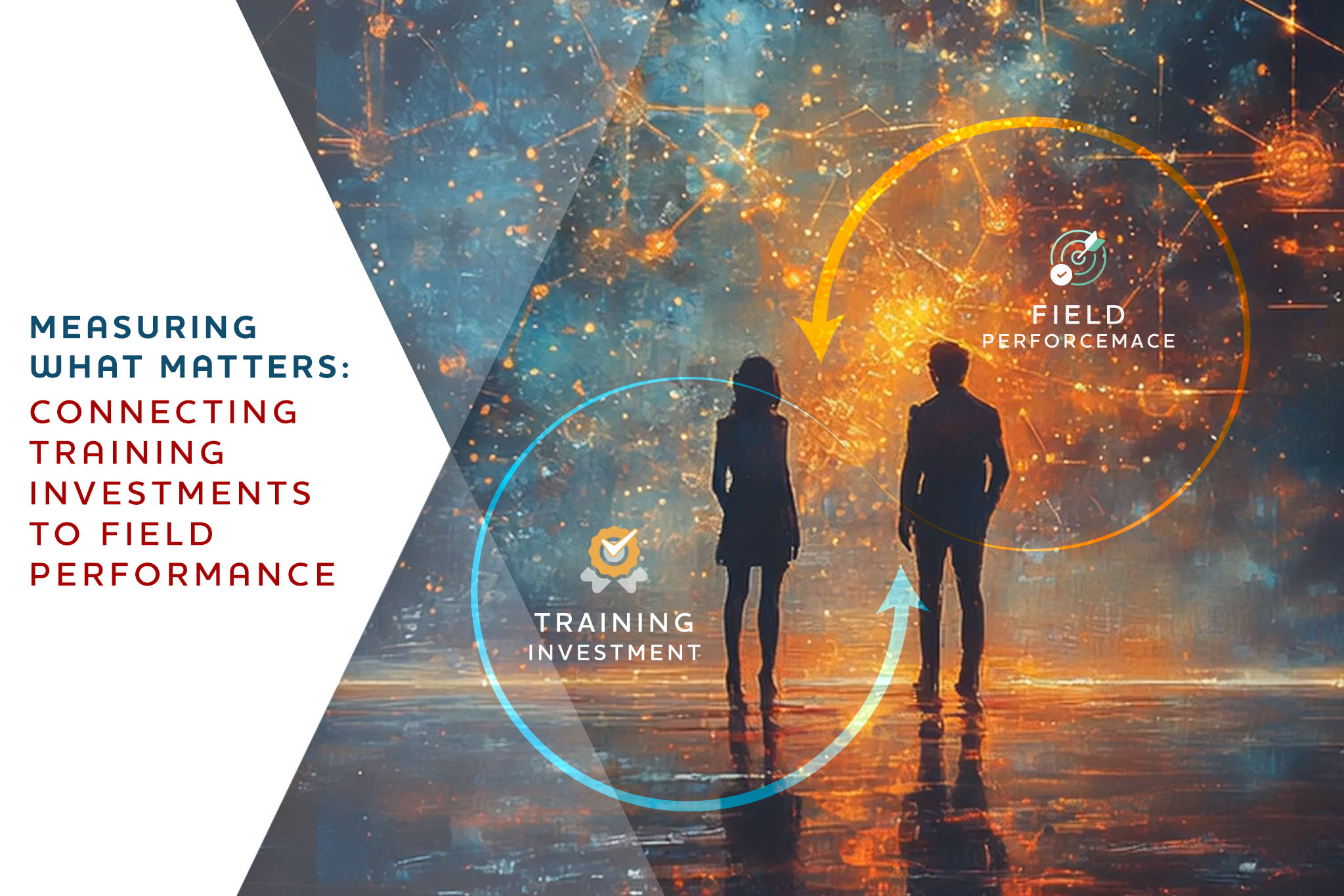

![Experiential Learning for Patients and HCPs Beyond the Pamphlet [2025 Guide]](https://tipmedia.com/wp-content/uploads/2025/04/blogs_october_10-14_1 2.jpg)

![Understanding Cancer Treatment through Virtual Reality (VR) – [2025 Guide]](https://tipmedia.com/wp-content/uploads/2025/04/blogs-7-10-25.jpg)

![How Augmented Reality Packaging Is Transforming Pharma Sales [2025 Guide]](https://tipmedia.com/wp-content/uploads/2024/10/blog-ARpackaging-2.jpg)




